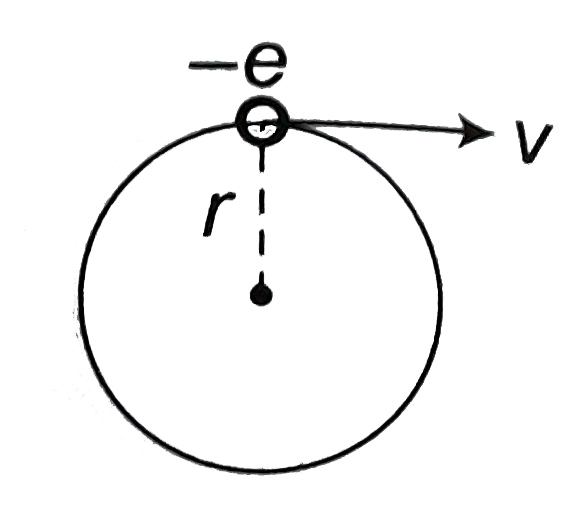An electron moves in a circle of radius π can with uniform speed 5×106m/sec. Find the electric current at point on the circle. (Take π2=10).
Time-period T=2πrv
i=qT=e2πr/v=ev2πr
=1.6×10−19×5×1062π×π×10−2
=4×10−12A.
 .
.
Topper's Solved these Questions
Similar Questions
Knowledge Check
- Question 1 - Select One
A particle moves in a circle of radius 20 cm with linear speed of 10 m/s. Find the angular velocity
A500radsB150radsC50radsD15rads - Question 2 - Select One
An electron is moving in a circle of radius 2m with speed 4 m/s . Find the acceleration of the electron
A8m/s2B4m/s2C16m/s2D10m/s2 - Question 3 - Select One
Find the circumference of a circle of radius 10 cm. (Takeπ=3.14.]
A72.8cmB62.8cmC82.8cmD92.8cm
An electron moves in a circular orbit of radius 10 cm with a constant speed of 4.0×106ms−1. Determine the electric current at a point on the orbit.
View SolutionAn electron moves in a circle of radius r=5.29×10−11M with speed 4.12×106m/s. Treat the circular path as a current loop with a constant current equal to the ratio of the electron charge magnitude to the period of the motion. If the circle lies in a uniform magnetic field of magnitude B = 7.10 mT, what is the maximum possible magnitude of the torque produced on the loop by the field ?
View SolutionIn hydrogen atoms, the electron moves in an orbit of radius 5.0×10−11m with a speed of 2.2×106ms−1. Find the equivalent curren , Electronic change =16×10−19C
View SolutionAn electron moves in a circular orbit with a uniform speed v. It produces a magnetic field B at the centre of the circle. The radius of the circle is proportional to
View SolutionAn electron moves in a circular orbit with a uniform speed v.It produces a magnetic field B at the centre of the circle. The radius of the circle is proportional to
View Solution

